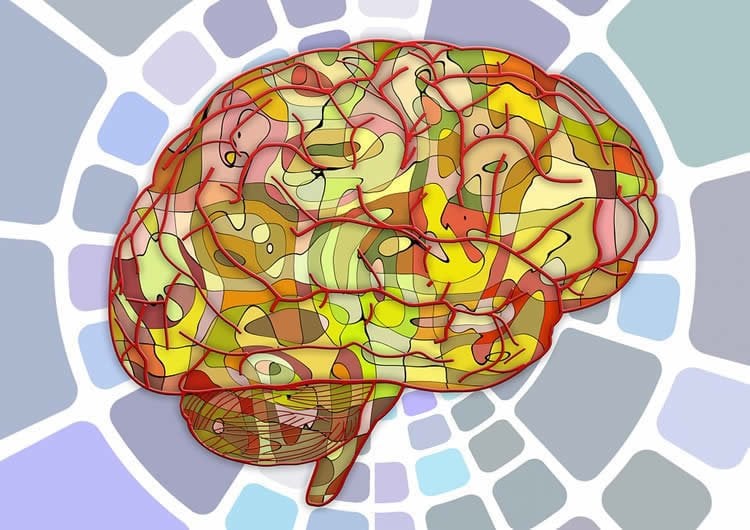Summary: University of Basel researchers reveal the volume of the anterior insula, a brain area associated with emotion and empathy, is larger in boys who express higher levels of callous-unemotional traits.
Source: University of Basel.
Callous-unemotional traits have been linked to deficits in development of the conscience and of empathy. Children and adolescents react less to negative stimuli; they often prefer risky activities and show less caution or fear. In recent years, researchers and doctors have given these personality traits increased attention, since they have been associated with the development of more serious and persistent antisocial behavior.
However, until now, most research in this area has focused on studying callous-unemotional traits in populations with a psychiatric diagnosis, especially conduct disorder. This meant that it was unclear whether associations between callous-unemotional traits and brain structure were only present in clinical populations with increased aggression, or whether the antisocial behavior and aggression explained the brain differences.
Using magnetic resonance imaging, the researchers were able to take a closer look at the brain development of typically-developing teenagers to find out whether callous-unemotional traits are linked to differences in brain structure. The researchers were particularly interested to find out if the relationship between callous-unemotional traits and brain structure differs between boys and girls.
Only boys show differences in brain structure
The findings show that in typically-developing boys, the volume of the anterior insula – a brain region implicated in recognizing emotions in others and empathy – is larger in those with higher levels of callous-unemotional traits. This variation in brain structure was only seen in boys, but not in girls with the same personality traits.

“Our findings demonstrate that callous-unemotional traits are related to differences in brain structure in typically-developing boys without a clinical diagnosis,” explains lead author Nora Maria Raschle from the University and the Psychiatric Hospital of the University of Basel in Switzerland. “In a next step, we want to find out what kind of trigger leads some of these children to develop mental health problems later in life while others never develop problems.”
This study is part of the FemNAT-CD project, a large Europe-wide research project aiming at investigating neurobiology and treatment of adolescent female conduct disorder.
Source: Nora Maria Raschle – University of Basel
Publisher: Organized by NeuroscienceNews.com.
Image Source: NeuroscienceNews.com image is credited to Tommy Leonardi.
Original Research: Full open access research for “Callous-unemotional traits and brain structure: Sex-specific effects in anterior insula of typically-developing youths” by Nora Maria Raschle, Willeke Martine Menks, Lynn Valérie Fehlbaum, Martin Steppan, Areti Smaragdi, Karen Gonzalez-Madruga, Jack Rogers, Roberta Clanton, Gregor Kohls, Anne Martinelli, Anka Bernhard, and Kerstin Konrad, in Neuro Image: Clinical. Published online December 9 2017 doi:10.1016/j.nicl.2017.12.015
[cbtabs][cbtab title=”MLA”]University of Basel “Callous and Unemotional Traits Show in Brain Structure of Boys Only.” NeuroscienceNews. NeuroscienceNews, 27 December 2017.
<https://neurosciencenews.com/callous-boys-brains-8272/>.[/cbtab][cbtab title=”APA”]University of Basel (2017, December 27). Callous and Unemotional Traits Show in Brain Structure of Boys Only. NeuroscienceNews. Retrieved December 27, 2017 from https://neurosciencenews.com/callous-boys-brains-8272/[/cbtab][cbtab title=”Chicago”]University of Basel “Callous and Unemotional Traits Show in Brain Structure of Boys Only.” https://neurosciencenews.com/callous-boys-brains-8272/ (accessed December 27, 2017).[/cbtab][/cbtabs]
Abstract
Callous-unemotional traits and brain structure: Sex-specific effects in anterior insula of typically-developing youths
Callous-unemotional traits are characterized by a lack of empathy, a disregard for others’ feelings and shallow or deficient affect, such as a lack of remorse or guilt. Neuroanatomical correlates of callous-unemotional traits have been demonstrated in clinical samples (i.e., adolescents with disruptive behavior disorders). However, it is unknown whether callous-unemotional traits are associated with neuroanatomical correlates within normative populations without clinical levels of aggression or antisocial behavior. Here we investigated the relationship between callous-unemotional traits and gray matter volume using voxel-based morphometry in a large sample of typically-developing boys and girls (N = 189). Whole-brain multiple regression analyses controlling for site, total intracranial volume, and age were conducted in the whole sample and in boys and girls individually. Results revealed that sex and callous-unemotional traits interacted to predict gray matter volume when considering the whole sample. This interaction was driven by a significant positive correlation between callous-unemotional traits and bilateral anterior insula volume in boys, but not girls. Insula gray matter volume explained 19% of the variance in callous-unemotional traits for boys. Our results demonstrate that callous-unemotional traits are related to variations in brain structure beyond psychiatric samples. This association was observed for boys only, underlining the importance of considering sex as a factor in future research designs. Future longitudinal studies should determine whether these findings hold over childhood and adolescence, and whether the neuroanatomical correlates of callous-unemotional traits are predictive of future psychiatric vulnerability.
“Callous-unemotional traits and brain structure: Sex-specific effects in anterior insula of typically-developing youths” by Nora Maria Raschle, Willeke Martine Menks, Lynn Valérie Fehlbaum, Martin Steppan, Areti Smaragdi, Karen Gonzalez-Madruga, Jack Rogers, Roberta Clanton, Gregor Kohls, Anne Martinelli, Anka Bernhard, and Kerstin Konrad, in Neuro Image: Clinical. Published online December 9 2017 doi:10.1016/j.nicl.2017.12.015







